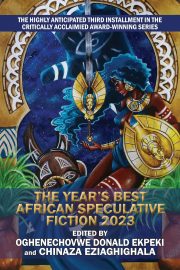Collaboration Tips For Comic Writers
by Ryan Breadinc
If you’re not artistically inclined and want to write solely for graphic novels, going into the comic industry can feel daunting.
However, collaboration can not only be an invaluable asset but a joy to participate in when you’re making comics. Many professional comic script writers don’t do their own art, and many artists prefer to illustrate from someone else’s directions. Collaborating with artists on a project can be a wonderful experience, both because it is a route to illustrating your stories and because you’ll learn a lot and even improve your story along the way with the help of a team.
So what are the best ways to go about collaboration as a comic writer?
Discuss Financial Matters and Rights
Financials and rights are something to think about before you even get started, but also to discuss with your collaborators. Consider how you want to get everything sorted and make sure everyone is on the same page. Discuss who retains copyright and controls media exploitation, along with compensation for auxiliary sales.
Think About Character Designs & References
When presenting a script to your illustrator, you want to make sure you tell them any specifics on how your characters look. If your artist doesn’t have anything to work with, they may struggle to develop the designs.
You don’t have to draw to have image references! Go onto Pinterest and search for something simple like ‘girl with braids’ – you’ll get a lot of different results and can pick something close to what you’re thinking of.
References are also important if you’ve got an idea of how a certain scene should be laid out. While words are great, everyone has a completely different interpretation of them, so having a picture on the Word document next to the script’s scene can make a huge difference. Character expressions, designs, scene layouts, and color schemes all benefit hugely from a united vision, and as the writer, you can help that along. You can usually find something close to what you’re looking for online, but don’t be afraid to do a five-second sketch or take a photo of yourself in a pose! It might even earn you a laugh from the artist.
Chances it will still look a little different depending on your illustrator’s style, but that can be a great thing! References are important, but you also have to be open to the artist’s ideas. Welcome input; this is a collaboration with another person who likely has fantastic ideas and perspectives of their own.
Do You Need a Colorist and Letterer?
Teams can consist of more than just a writer and an illustrator, and often they do!
There are illustrators who will color and letter your project as well (I’ve worked with some, and they’re remarkably talented). Often a penciller will come with their own inker and have that included in their fee, but many of them don’t color or letter and you’ll need to put together your own team of 4-5 people instead of a 2-person collaboration. Don’t panic if you don’t know any colorists or letterers yourself – ask your artist if they have any recommendations, take a look on Twitter, or ask comic industry contacts if you have some. Many people will be happy to help you find what you’re looking for.
Discuss Deadlines
This is very, very important. Often artists will ask you if you have a specific deadline, but some won’t. Either way, you need to have a time frame set so that the project doesn’t end up dragging out. I made the mistake of not setting a deadline early on in my writing career and ended up regretting it immensely. This doesn’t mean you have to be rude about it – if you don’t have a specific deadline in mind, ask them what they think a reasonable amount of time for them to complete the project is and then get it in writing. If I don’t know the person I’m collaborating with and can’t verify that they’ll get the work done, I’ll ask them to sign a contract, so I have it in writing. This is a good way to protect yourself, but it also keeps it professional.
Learn The Trade, Even If You Don’t Stick With It
“But I don’t want to illustrate!” you tell me.
That’s fine! But I do recommend taking a short course on everything you’re going to be collaborating on. Not for you to be able to do it yourself but to get a better idea of how the process works. There are plenty of comic writers who just don’t understand how the sketch/lineart/color/lettering in a comic works, and it can make communication more difficult because your collaboration partners can’t communicate the details in a way that you understand.
I took a six-week colorist course! While I don’t currently plan to work as a colorist, it helped me get a better perspective on how everything worked, and it’s been invaluable when discussing with others in the comic industry.
Be Open To Alternate Ideas
There’s every chance that your comic won’t turn out exactly how you pictured it.
Your collaborations will be better if you’re ready for this happening and open to your team’s ideas. Maybe the angle on a panel is different, or the colours are in shades you didn’t think of, and that’s okay! It’s fine to ask for changes (as long as you’re asking and not being rude), and it’s also okay to stop for a few moments and think; could this be better than what I was imagining? Part of collaboration is other people’s input and when you welcome this, making a comic becomes so much more fun.
 Ryan Breadinc is a writer who loves creation in all its forms. This largely turns into comics and short stories as well as tabletop adventures, and he shares this passion with everyone he meets. Hailing from Bunbury, Western Australia, he’s collaborated with creators from all over the world and plans to have even more under his belt as the years go by! You can find him @breadincbooks on most socials as well as on his website, https://breadincbooks.com/.
Ryan Breadinc is a writer who loves creation in all its forms. This largely turns into comics and short stories as well as tabletop adventures, and he shares this passion with everyone he meets. Hailing from Bunbury, Western Australia, he’s collaborated with creators from all over the world and plans to have even more under his belt as the years go by! You can find him @breadincbooks on most socials as well as on his website, https://breadincbooks.com/.


